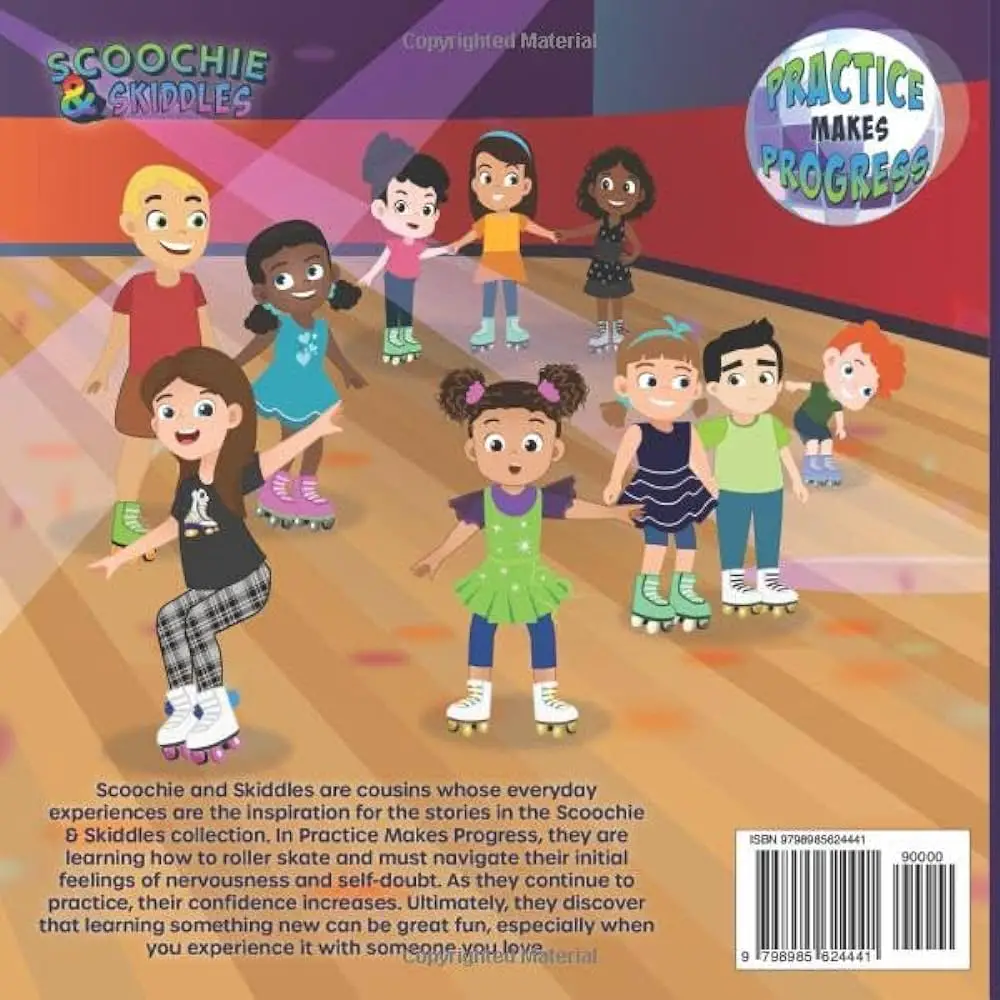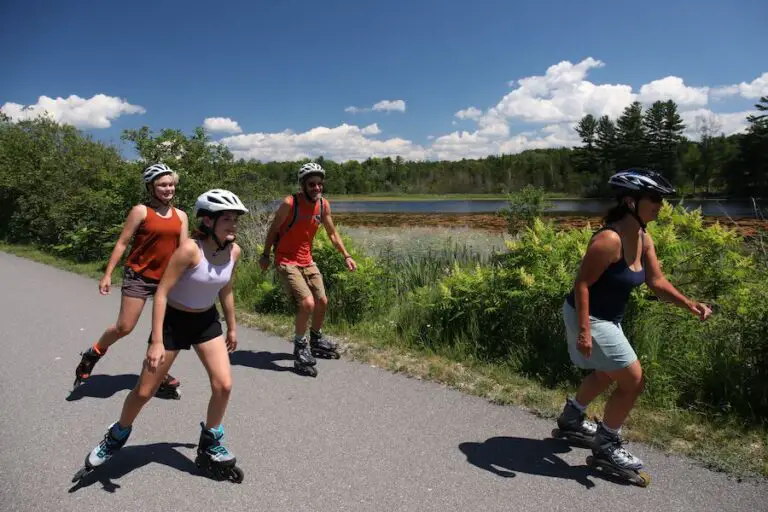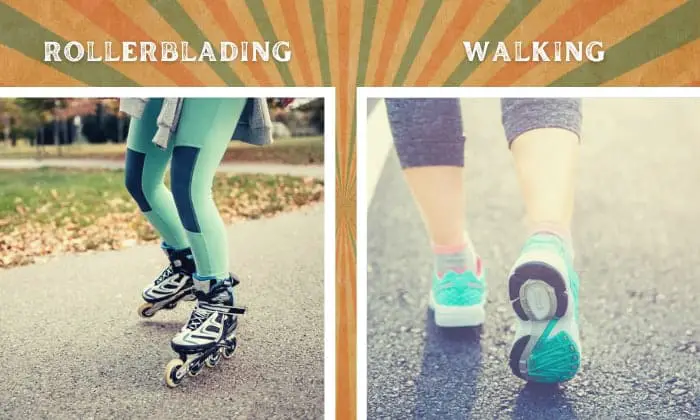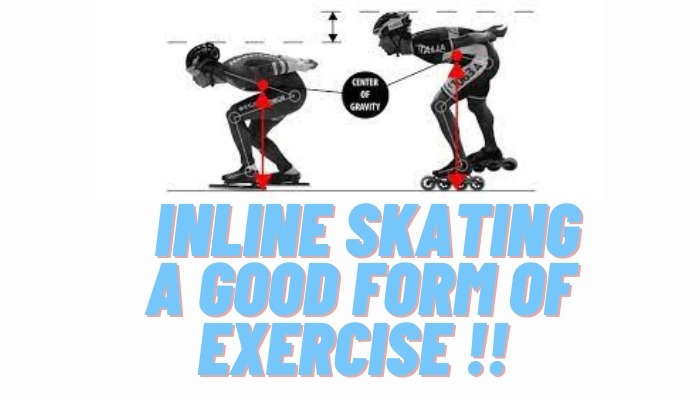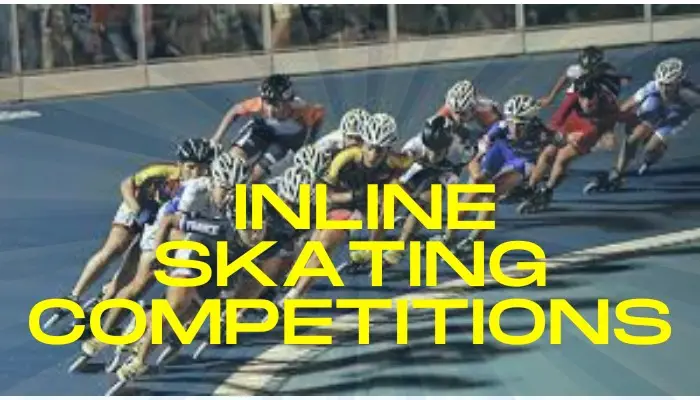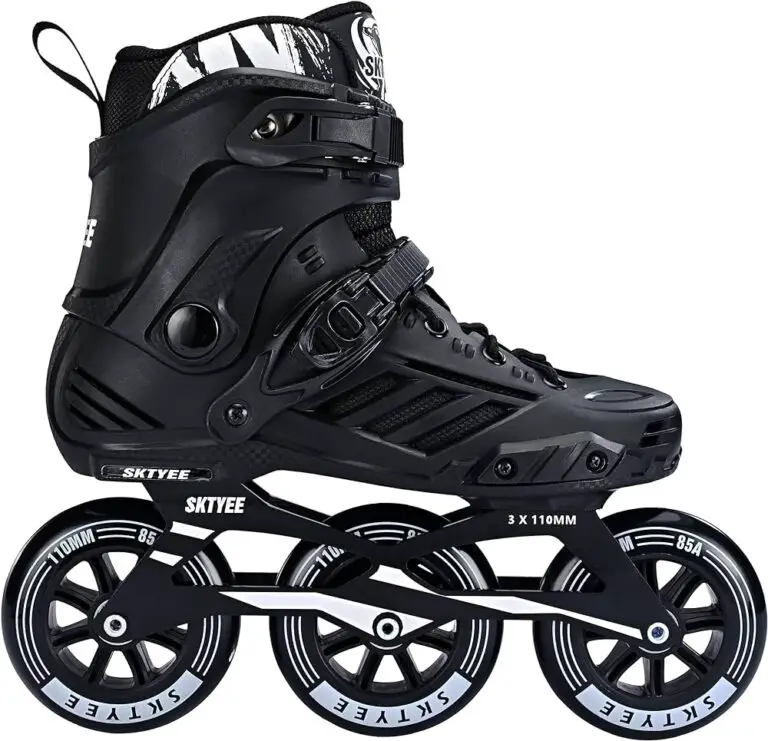Can Children Learn Inline Skating? Discover the Power of Persistence
( If you purchase through our sponsored links, we may receive a small commission at no extra cost to you )
Children can definitely learn inline skating and benefit from it as an enjoyable and skill-enhancing activity from an early age. Inline skating is an ideal way for kids to develop balance, coordination, and overall physical fitness while having fun.
Learning inline skating not only provides children with a new and exciting way to stay active, but also helps them build confidence, improve their motor skills, and learn important lessons about perseverance and problem-solving. With proper instruction, safety gear, and a supportive environment, children can easily master the basics of inline skating and gradually progress to more advanced techniques and tricks.
So, encourage your child to dive into the world of inline skating and witness their growth and happiness unfold.

Credit: www.amazon.com
Factors To Consider When Teaching Children Inline Skating
Teaching children how to inline skate can be an exhilarating and rewarding experience. However, it is essential to consider several factors to ensure their safety and enjoyment during the learning process. From age-appropriate equipment and safety gear to selecting the right environment for learning, these considerations play a crucial role in providing a positive inline skating experience for children. Additionally, effective teaching methods tailored to their needs can contribute to their progress and skill development. Let’s dive into each factor to gain a deeper understanding.
Age-appropriate Equipment And Safety Gear:
Selecting the correct inline skating equipment and safety gear for children is paramount to their safety and comfort while learning. Here are some guidelines to consider:
- Skates: Choose skates specifically designed for children, ensuring they provide suitable ankle support and a secure fit. Adjustable skates can be a great option as they can accommodate growing feet.
- Helmet: Wearing a properly fitted helmet is crucial for safeguarding their head from potential injuries. Look for helmets that meet safety standards to ensure optimal protection.
- Protective gear: Elbow and knee pads, as well as wrist guards, must be worn to shield their vulnerable joints from any potential falls or collisions.
Choosing The Right Environment For Learning:
The learning environment can significantly impact a child’s inline skating experience. Selecting an appropriate location is essential to minimize risks and create a supportive atmosphere. Consider the following factors:
- Smooth surface: Opt for a smooth, flat surface with minimal obstacles or irregularities. This can include indoor rinks, basketball courts, or designated skating areas.
- Low-traffic areas: Ensure the chosen location has minimal to no vehicular or pedestrian traffic to reduce the chances of accidents and distractions.
- Adequate space: The learning area should offer enough space for children to practice their skills comfortably without feeling cramped.
Effective Teaching Methods For Children:
Adopting appropriate teaching methods can enhance the learning experience for children and help them develop inline skating skills more efficiently. Here are some techniques to consider:
- Progressive approach: Start with the basics and gradually introduce more advanced skills as the child becomes comfortable and confident.
- Positive reinforcement: Encourage and praise children for their efforts and improvements, boosting their motivation and self-confidence.
- Demonstration: Show children the correct technique and posture through visual demonstrations. This helps them understand the proper form and aids in their skill acquisition.
- Structured lessons: Break down the learning process into smaller, manageable steps, focusing on one skill at a time. This approach increases comprehension and prevents overwhelming the child.
- Fun and interactive activities: Incorporate games and activities that engage children while improving their balance, coordination, and overall skating skills.

Credit: www.latinosforeducation.org
Tips For Teaching Children Inline Skating
Children can learn inline skating with the right tips and guidance. By focusing on balance, safety, and gradual progression, children can develop their skills and enjoy this exciting activity.
Inline skating is not only a fun recreational activity but also a great way for children to develop balance, coordination, and confidence. However, teaching children how to inline skate can be a challenging task. To make the learning process smooth and enjoyable, here are some effective tips for teaching children inline skating:Breaking Down The Learning Process Into Manageable Steps
When it comes to teaching children inline skating, it’s essential to break down the learning process into small and manageable steps. This approach allows children to grasp the fundamentals gradually and build a solid foundation. Here is a breakdown of the learning process:- Start with the basics: Begin by teaching your child how to put on the inline skates correctly and maintain the correct posture.
- Balance training: Help your child practice their balance by standing still and shifting their weight from one foot to the other. Gradually encourage them to take small steps while maintaining balance.
- Gliding: Once your child is comfortable with balancing, teach them how to glide by pushing off one foot and rolling with the other foot. Encourage them to keep their knees slightly bent and arms relaxed for better stability.
- Turning: Introduce basic turning techniques by teaching your child how to lean and shift their weight to steer. Start with gentle turns and gradually progress to tighter turns.
- Braking: Teach your child how to stop safely by using the braking techniques specific to inline skating, such as the T-stop or heel brake. Start with slow speeds and gradually increase difficulty as they become more confident.
Encouraging A Positive Mindset And Fostering Confidence
Building a positive mindset and fostering confidence are crucial when teaching children inline skating. Here are a few strategies to encourage a positive mindset:- Provide constant encouragement: Offer positive reinforcement and praise whenever your child achieves a milestone or demonstrates improvement.
- Set achievable goals: Break the learning process into smaller goals, and celebrate each accomplishment that your child achieves along the way.
- Be patient and supportive: Understand that learning inline skating requires time and practice. Maintain a patient and supportive attitude, reassuring your child that it’s okay to make mistakes as long as they keep trying.
- Focus on fun: Make the learning process enjoyable by incorporating games and challenges that allow your child to practice their skating skills creatively.
Providing Adequate Practice And Repetition
Practice and repetition are key to mastering inline skating skills. Here’s how you can ensure your child gets enough practice:- Designate regular practice sessions: Set aside dedicated time for your child to practice inline skating. Consistency is key to building muscle memory and improving their skills.
- Reinforce learned skills: Repeat the exercises and techniques that your child has already learned during each practice session, reinforcing their muscle memory and boosting their confidence.
- Gradually increase difficulty: As your child becomes more proficient, slowly introduce new challenges and skills to keep them engaged and motivated. This gradual progression helps prevent frustration and enhances their overall learning experience.
Rewarding And Celebrating Small Achievements
Acknowledging and celebrating small achievements can be highly motivating for children. Here are some ways to reward and celebrate your child’s progress:- Verbal praise and encouragement: Offer genuine praise and specific feedback when your child demonstrates improvement or successfully executes a skating skill.
- Small incentives: Offer small rewards, such as stickers or tokens, for meeting specific goals or milestones.
- Family or friend outings: Plan special outings to the local roller skate rink or park once your child reaches significant milestones in their skating journey.
- Creating a progress chart: Keep track of your child’s progress by creating a visually appealing progress chart. Allow your child to mark their achievements and watch their progress unfold.
Credit: www.omnilabs.ai
Frequently Asked Questions On Can Children Learn Inline Skating?
What Age Can A Child Learn To Rollerblade?
A child can learn to rollerblade at a young age, typically around 4 to 5 years old.
How Do I Teach My Child To Inline Skate?
To teach your child to inline skate, start by ensuring they have the right equipment, including properly fitting skates and safety gear. Find a safe and open space with a smooth surface for them to practice. Teach them the basic techniques like how to balance, how to push off, and how to stop.
Gradually increase the difficulty level as they improve their skills. Encourage them and provide positive reinforcement throughout the learning process.
How Do I Teach My 4 Year Old To Skate?
Teaching a 4-year-old to skate requires patience and simple steps. Start by ensuring they have proper safety equipment. Then, find a beginner-friendly skating area. Begin by teaching them to balance on skates while holding your hand. Practice walking and sliding on the ice gradually.
Encourage and praise their progress.
How Do You Roller Skate For Kids For Beginners?
To roller skate for kids beginners: Start by getting properly-fitted skates and protective gear. Find a flat, smooth surface to practice on. Place one foot forward with your knees slightly bent. Push off with your other foot and glide. Keep practicing and maintain balance and control.
Have fun!
Conclusion
Children can indeed learn inline skating and reap numerous benefits from it. From improving balance and coordination to boosting physical fitness and building confidence, inline skating offers a fun and engaging activity for kids of all ages. By providing the right equipment, supervision, and support, children can safely and successfully learn this exciting sport.
So, don’t hesitate to introduce your child to the world of inline skating and watch them thrive both physically and mentally.

